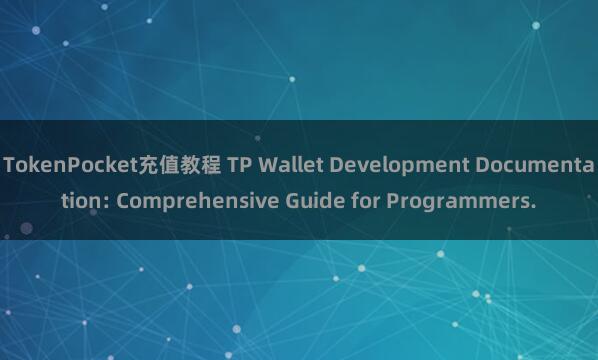TokenPocket充值教程 TP Wallet Development Documentation: Comprehensive Guide for Programmers.

TP Wallet Development Documentation: Comprehensive Guide for ProgrammersTokenPocket充值教程
Introduction
TP Wallet is a digital wallet application that allows users to securely store, send, and receive cryptocurrencies. It is developed using the latest technology to ensure the security and reliability of transactions. This comprehensive guide is designed for programmers who are interested in developing applications using TP Wallet.
Getting Started
To start developing with TP Wallet, programmers need to have a basic understanding of blockchain technology and cryptocurrency. They also need to have a strong grasp of programming languages such as JavaScript, Python, and Solidity. Additionally, familiarity with web development frameworks like React and Angular is beneficial.
Setting Up the Development Environment
Security is a top priority for Bither, and the app offers several robust security features to protect users' funds. One such feature is the use of cold storage, which means that the private keys used to access the funds are stored offline. This significantly reduces the risk of hacking and unauthorized access to the funds.
Downloading and setting up Bither Wallet is simple and straightforward. You can download the app from the App Store or Google Play Store, depending on your device. Once you have installed the app, you will need to create a new wallet by following the on-screen instructions. Make sure to securely store your recovery phrase, as it is crucial for accessing your wallet in case you forget your password.
Programmers should start by setting up their development environment with the necessary tools and resources. They will need to install Node.js, npm, and Truffle, which are essential for developing Ethereum smart contracts. They can also use Ganache for testing their smart contracts locally before deploying them to the blockchain.
Creating Smart Contracts
TokenPocket备份Smart contracts are the backbone of TP Wallet, as they govern the rules and processes of transactions within the application. Programmers can create smart contracts using Solidity, a high-level language specifically designed for writing smart contracts on the Ethereum blockchain. They can define functions for sending and receiving cryptocurrency, as well as implementing security features to prevent unauthorized access.
Integrating with the TP Wallet API
Programmers can integrate their smart contracts with the TP Wallet API to enable users to interact with the application through a user-friendly interface. They can use RESTful APIs to send and receive cryptocurrency, check transaction history, and manage their wallets. The API also provides secure authentication and encryption to protect user data from malicious attacks.
Testing and Deployment
Before deploying their application to the mainnet, programmers should thoroughly test their smart contracts and APIs to ensure that they work as intended. They can use tools like Truffle and Solidity testing frameworks to run automated tests and detect any bugs or vulnerabilities. Once they are confident in their code, they can deploy their application to the Ethereum blockchain using tools like Remix or MetaMask.
Conclusion
In conclusion, TP Wallet offers a comprehensive guide for programmers who are interested in developing applications using blockchain technology. By following the steps outlined in this documentation, programmers can create secure and reliable digital wallets that enable users to safely store and manage their cryptocurrencies. With the right skills and toolsTokenPocket充值教程, developers can harness the power of blockchain technology to create innovative solutions that revolutionize the way we transact in the digital age.
热点资讯
- TokenPocket跨链 TP钱包功能全面解读:一站式数字
- TP钱包支持ETH TP钱包:智能数字货币责罚利器,数字化糊
- TokenPocket热钱包 快来下载最新版TP钱包,助您科
- TP钱包下载 TP钱包超越的Web3工夫,保险您的数字金钱安
- TokenPocket备份 TokenPocket官网:区块
- TokenPocket区块链合约 TP钱包区块链合约:数字资
- TP钱包冷钱包 TP钱包配置文档:全面辅导TP钱包API的接
- TP钱包官网 Integrate TokenPocket A
- TP钱包智能钱包 TP钱包官网:安全轻便的数字资产处理平台
- TP钱包 Solidity教程 TokenPocket SD
最新资讯
- TokenPocket APP下载 Solidity编程:T
- TP钱包交易 TokenPocket Solidity: E
- TP钱包下载 TP钱包超越的Web3工夫,保险您的数字金钱安
- TokenPocket充值教程 TP Wallet Deve
- TokenPocket支持DAI TokenPocket诞生
- TP钱包 Solidity教程 TokenPocket SD
- TokenPocket稳定币支持 TP钱包API实用指南:快
- TP钱包官网 Integrate TokenPocket A
- TokenPocket TokenPocket合约地址与交游
- TokenPocket Solidity TP钱包区块链合约



